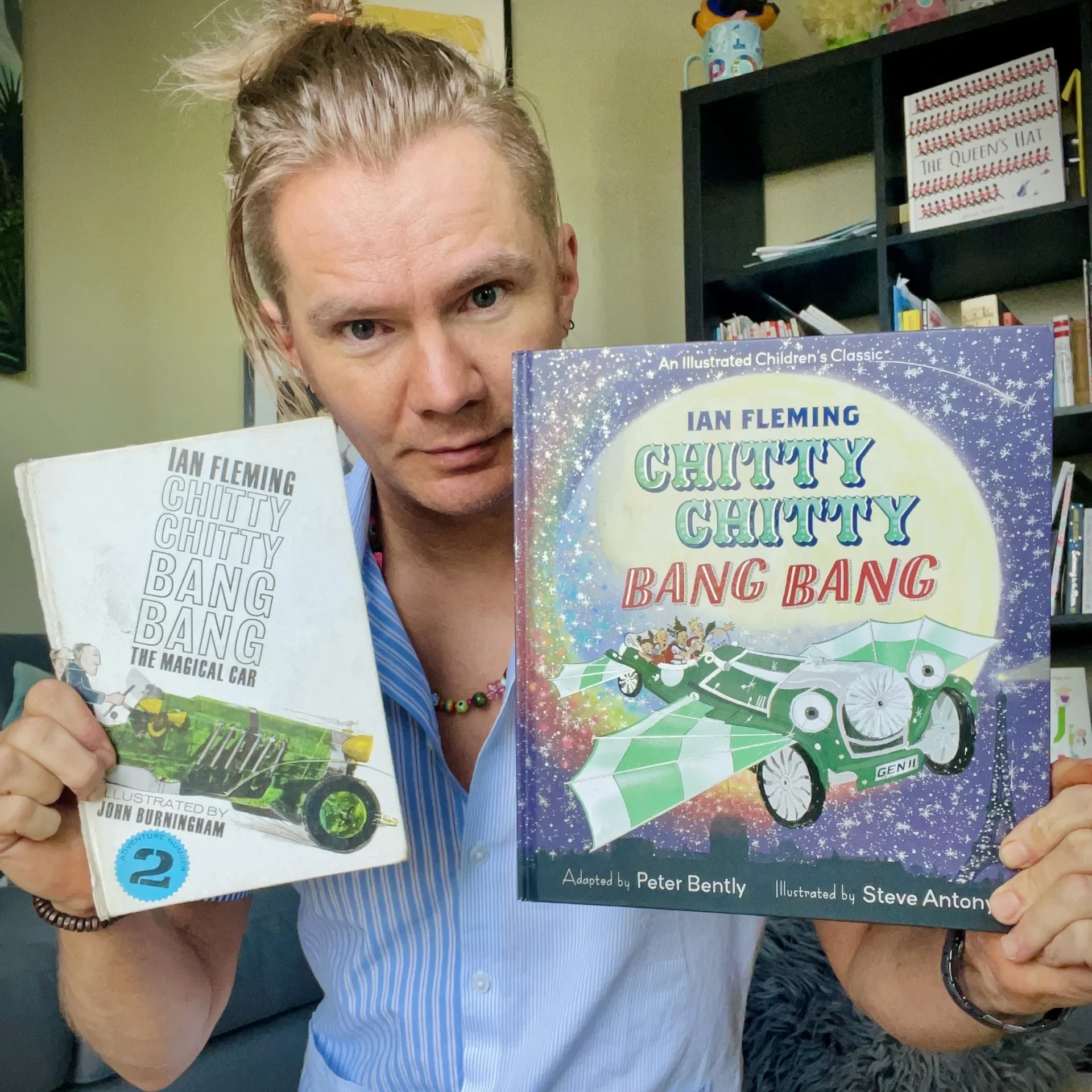

For the 60th anniversary of Chitty Chitty Bang Bang, Ian Fleming Publications are publishing a special anniversary edition, featuring John’s iconic artwork on John Burningham’s birthday, the 27th of April
From July, National Trust Mottisfont are hosting ’Chitty Chitty Bang Bang: Celebrating 60 years‘. Experience Ian Fleming’s iconic tale like never before, with over 80 original illustrations, including, for the very first time, the complete set by legendary artist John Burningham, created 60 years ago.
The show opens on Saturday 19 July 2025. Keep an eye out for more information

Storystock bring their interactive ‘storyshow’ of Mr Gumpy’s Outing to Glastonbury Festival on 28th-29th June. Find them in the Kidzfield at 12.40pm Saturday and 2.10pm Sunday.
The author and illustrator Steve Antony was asked to illustrate a picture book version of Chitty Chitty Bang Bang in 2019. He tells us here about finding an original copy of John’s version and illustrating Chitty for a new generation.
Professor Martin Salisbury shares his admiration for an illustration from Humbert, Mr Firkin and the Lord Mayor Of London
The Estate of John Burningham has released for sale high quality giclee reproductions of 7 illustrations on a limited print run. Each is signed, numbered and accompanied by a certificate of authenticity.


Sign up here and be the first to hear about exhibitions, events and other news.